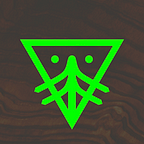Ēostre
April: The reborn dawn
🎼 Aurora by Björk
Ēostre (Proto-Germanic: ‘Austrō(n)’, Old High German: ‘Ôstara’, Old Saxon: ‘Āsteron’) is a West Germanic goddess, believed to have been celebrated by pagan Anglo-Saxons during April. She is “associated with the coming of spring and the dawn [at equinox]. Because she brings renewal, rebirth from the death of winter, some [neopagan] Heathens associate Ēostre with Iðunn, keeper of the apples of youth in Scandinavian mythology.” (Cusack, 2008)
The theonyms Ēastre and Ôstara are cognates — linguistic siblings stemming from a common origin. They derive from the Proto-Germanic theonym meaning ‘dawn, daybreak’ (Lithuanian: ‘Auš(t)rà’). The modern English ‘east’ also derives from this root, from an earlier Proto-Indo-European word for ‘towards the dawn’.
In his 1835 Deutsche Mythologie, Jacob Grimm speculates:
Ôstara[/Eástre] seems therefore to have been the divinity of the radiant dawn, of upspringing light, a spectacle that brings joy and blessing, whose meaning could be easily adapted by the resurrection-day of the Christian’s God.
While the more contemporaneous account of the Anglo-Saxon month from Bede provides scant details about her function in pre-Christian Britain “if we accept that the [original] month name [of Ēostermōnaþ] combines two elements meaning ‘east’ or ‘eastern’ and ‘month’, then the appearance of the equinoctial sunrise and its nearest full-moonrise, in their most easterly positions on the horizon, provide a logical explanation for both the timing and etymology.” (Sermon, 2022)
Dawn
The dawn goddess is believed to have been one of the most important deities worshipped in ancient Indo-Europe mythology due to the consistency of her characterization in subsequent traditions. Sometimes portrayed as un-ageing and her coming as an eternal rebirth, she often rises from her bed to deliver light and disperse the night. In Ancient Greece she was known as Eos; in Roman mythology, Aurōra; in Lithuania, Aušrinė, and in Slavic folklore, Zorya.
Eos is the sister of the sun god Helios and the moon goddess Selene. Each day she drives her two-horse chariot, heralding the breaking of the new day and her brother’s arrival. She mothered the Anemoi (the Winds), who were the offspring of her union with Astraeus, the god of dusk and father of the stars. Some authors made her the child of Nyx, the personification of the night. She shares several elements with the love goddess Aphrodite, perhaps signifying a common origin for the two since Aphrodite is the culprit behind Eos’ numerous love affairs, having cursed the goddess with an insatiable lust for mortal men. Her most notable mortal lover is a Trojan prince, Tithonus, for whom she ensured the gift of immortality from Zeus, but forgot to ask that he be granted eternal youth, leading to him aging without dying:
When loathsome old age pressed full upon him, and he could not move nor lift his limbs, this seemed to her in her heart the best counsel: she laid him in a room and put to the shining doors. There he babbles endlessly, and no more has strength at all, such as once he had in his supple limbs.
Boudica and the hare
In 43 CE Rome invaded Britain. While some native kingdoms were defeated in battle and occupied, others remained nominally independent as allies of the Roman Empire. One such tribe was the Iceni (now Norfolk), whose king, Prasutagus, attempted to secure his independence by leaving his lands jointly to his daughters and the Roman emperor, Nero, upon his death. However, his will was ignored; their lands were seized, Icenians enslaved, and his widow, Boudica, was violently flogged and her daughters raped.
A posthumous Roman account of Boudica’s uprising, no doubt apocryphal or embellished in many ways given it was authored retrospectively over 150 years after the fact, nonetheless contains a fascinating address to her troops before her failed revolt:
When she [Boudica] had finished speaking, she employed a species of divination, letting a hare escape from the fold of her dress; and since it ran on what they considered the auspicious side, the whole multitude shouted with pleasure, and Boudica, raising her hand towards heaven, said: “I thank you, Andraste, and call upon you as woman speaking to woman … I beg you for victory and preservation of liberty.” — Dio Cassius
It was previously believed that the Romans introduced rabbits to Britain, however archeological finds have since suggested that brown hares were introduced earlier, during the Late Iron Age between the fifth and third centuries BCE.
When exotic animals arrive into a culture from remote realms, they are often associated with supernatural powers and deities. As Julius Caesar wrote in Commentaries on the Gallic War (58–49 BCE), before the conquest of Britain, “the Britons consider it contrary to divine law to eat the hare, the chicken or the goose”, insinuating they may been considered sacred animals.
A dramatically increased prevalence of lagomorph-motif brooches during this era, clustered around the east of England, suggests that hares could have been tied to a specific goddess since animal brooches were often associated with religious figures. These same regions contain places such as Eastrington/Eastringatun (Yorkshire), Eastrea/Estrey (Cambridgeshire), and Eastry/Eastrgena (Kent), potential etymological roots and routes between the mystical hare and the pagan goddess Eostre.
Part of Heathens seasons: a celebration of indigenous European traditions
All content adapted or transcribed directly from Wikipedia. Sources: Ēostre, *H₂éwsōs, Eos, Boudica
